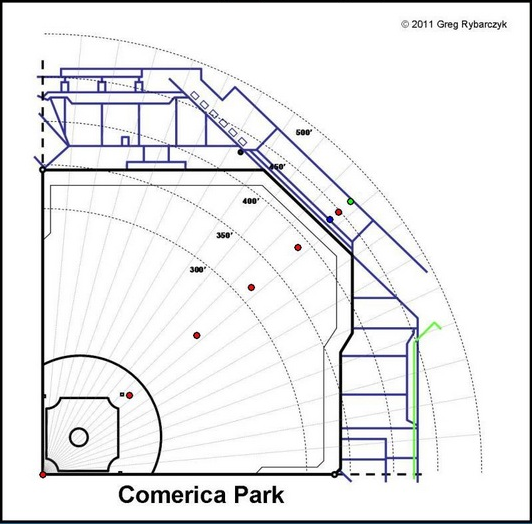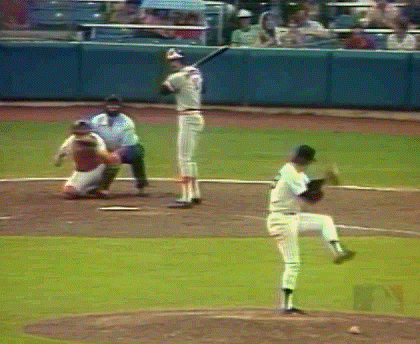![]()
The Tanaka bidding war certainly made the past offseason more interesting. Here are more Asian ballplayers that could have an impact this upcoming winter.
One of the defining stories of the past offseason was the race for the Japanese right-handed pitcher Masahiro Tanaka. The baseball world was stunned when the Yankees invested in a seven-year, $155 million contract (plus the $20 million posting fee) on the ace.
Without having thrown a pitch in MLB, Tanaka became the 19th-highest-paid player ever and, believe it or not, for the first half of the 2014 season, he seemed to worth every penny of it... until he was diagnosed with partial elbow ligament tear. The Yankees are counting on his late-season return, but unfortunately for them, Tommy John surgery may be a possibility as well.
Tanaka is not the only Asian import that has thrived in 2014. There is Yu Darvish, who had his usual brilliant season until he was shut down with injury. Hisashi Iwakuma, having an even better season than he did last year, has established as a solid No. 1 or 2-type starter in the majors.
Hyun-Jin Ryu, the first direct import from Korean Baseball Organization, is second in National League with a 2.60 FIP - behind only teammate Clayton Kershaw. Hiroki Kuroda, Tsuyoshi Wada, Junichi Tazawa and Norichika Aoki have all had consistent playing time in the Majors.
Success of such players has turned more heads towards Nippon Professional Baseball and Korean Baseball Organization for talent searching. We may not see a Tanaka-tier talent head over to the States this offseason, but there are some names that you might hear this winter.
RHP Kenta Maeda, Hiroshima Toyo Carp (NPB)
MLB fans have been talking about the Carp ace for a while. After Tanaka headed to the states, many crowned Maeda as the next big import, and the righty himself has expressed interest as well. Pitching for the same team where Hiroki Kuroda was once the ace, Maeda is having a solid 2014 season: 10-8, 2.86 ERA in 148 innings with 37 walks and 121 strikeouts.
Watch some video of Maeda pitching. The righty's main strength is that he can throw multiple pitches - fastball, slider, curve, splitter and changeup - for strikes. The knock against Maeda is that none of the pitches are especially plus.
According to a Baseball America scouting report (subscription required), Maeda does not have a "great fastball plane" due to his size and "some scouts aren't sold on Maeda's stuff playing in the big leagues, but those who like him think he has a no. 4 starter potential." The article does praise Maeda's fastball for having "good sink and run," as he commands them well.
One of the reasons why Maeda is not regarded as highly as Tanaka is because he is lankier and shorter -- listed just under 6 feet and around 178 pounds, while Tanaka is listed at 6-foot-2 and 205 pounds. But if there is any area where Maeda has proven to be better, it's the health and innings-eating. He led the league in innings pitched in the league in the 2010, 2011 and 2012 seasons. In 2014, he has dealt with few issues -- but nothing serious.
There are already multiple major league teams said to be interested in Maeda's service. Despite being considered the next big Nippon Professional Baseball import, he does not stack up to Yu Darvish or Masahiro Tanaka's level.
Patrick Newman of NPB Tracker compares him to a one-time Atlanta Brave Kenshin Kawakami -- but with "advantages to youth and health." Kawakami had a 3.81 ERA/4.21 FIP in his first MLB season, which seems acceptable for mid-to-back-end of the rotation. But a team that is willing to invest in a soild contract for Maeda may hope for more.
SS Jung-Ho Kang, Nexen Heroes (KBO)
Kang has already expressed interest in pursuing a major league career and his strong 2014 campaign has helped -- a lot. The slugging shortstop leads the Korean Baseball Organization in OPS (1.219) and WAR (9.3) and is second in home runs (38).
Nick Cafardo of the Boston Globe wrote about Kang on Saturday, describing the shortstop as a hitter with "major power" and projecting him to get "some serious money." As you may see in this video, Kang hits for power to all fields, and his .320 average since 2012 suggests that he also has a good hit tool.
Originally a catcher drafted out of high school, Kang shows strong arm strength across the diamond as well. Here is a montage of his plays as a shortstop.
The history of success for Asian infielders in MLB is quite scarce. Hiroyuki Nakajima, who signed a two-year deal with the Oakland Athletics in 2012-2013 offseason, has not sniffed the majors, and in 2014, he has performed mediocrely in... Double-A (105 wRC+ in 73 games).
Tsuyoshi Nishioka, who signed with the Twins back in the 2010-2011 offseason, put up a putrid 38 wRC+ in his two-year MLB career. Kaz Matsui showed 30-homer power in NPB but never hit more than 9 in a season in the Majors (and also made 23 errors in his first season with the Mets).
Akinori Iwamura did compile 5.5 fWAR in his first two seasons with the Tampa Bay Rays, but after hitting 62 homers combined for 2005 and 2006 seasons in Japan, he only hit 16 in four-year ML career.
Will Kang finally turn things around for the luck of Asian infielders? We shall see. Based on reports out of Korea (including a recent one where the managers of the Heroes received complaints from MLB scouts for giving Kang a day off), he seems destined to be stateside if the Heroes are willing to post.
The free agent infielder class after this season is not particularly strong - after Hanley Ramirez, Pablo Sandoval and J.J. Hardy, there does not seem to be a candidate for noteworthy signing. Putting Kang in the infield market mix could make things more interesting.
RHP Chihiro Kaneko, Orix Buffaloes (NPB)
Like the Hiroshima Toyo Carps, the Orix Buffaloes are not known for being a powerhouse of the league. However, they do have one of the finest pitchers in Japan in Chihiro Kaneko. Chihiro leads Nippon Professional Baseball in ERA (1.98) while limiting walks (2.03 BB/9) and striking out a lot (10.24 K/9).
Despite surpassing Maeda's performance, Kaneko is not as much talked about, because of his average stuff. With a fastball around 90 mph, Kaneko relies on mixing pitches and smarts to get the hitters out. According to NPB Tracker charts, the righty also features curve, slider, changeup, forkball, shuuto and cut fastball for his set of tools.
Here is a video of Kaneko pitching. At least based on this footage, the righty does not seem to have any problem locating pitches on the corners to generate called strikes and weak swings.
Even though Kaneko has established himself as one of the notable targets for major league teams, it is unclear if he will test the water to head stateside next year. The righty will be eligible for domestic free agency after the 2014 season, and MLB teams would have to wait until the 2015-2016 offseason for Kaneko to be eligible for international free agency.
There is a possibility that Kaneko may ask to be posted by the Buffaloes. Or he could choose to stay with the Buffaloes or sign with other NPB team like, let's say, the Yomiuri Giants, who are already linked to the righty and are "the Yankees of the NPB, known for their long history of success and ability to hoard talent."
Unlike previous players mentioned in this article, Kaneko is said to have a lukewarm interest in MLB. It will be interesting to see if his mind changes at all during the offseason or if he will choose to preserve his talents for Nippon Professional Baseball.
LHP Kwang-Hyun Kim, SK Wyverns (KBO)
Back in 2010, Kim rivaled Hyun-Jin Ryu as one of the best young pitchers of Korean Baseball Organization. Earlier in his career, in 2008 as a 20-year old, Kim garnered the league MVP award by leading in wins (15) and strikeouts (150) while posting a 2.39 ERA.
In 2014, the Korean lefty is having his first healthy season in four years. From 2011 to 2013, Kim suffered a few shoulder injuries that robbed him of effectiveness (4.84, 4.30 and 4.47 ERA's respectively) and innings totals (74.1, 81.2, 133). This year, he leads the league with a ERA (in 151.1 innings pitched so far), the only starter under 3.00 in KBO.
Thanks to his performance, Kim has attracted scouts to the Munhak Stadium of Incheon, where the Wyverns call home. According to Clint Hulsey of I R Fast from July 2013, Kim throws his four-seam fastball around 87 to 92 mph and mixes it with sinker, slider and curve - none of which described to be particularly plus. Hulsey speculates that Kim "would have to convert to reliever" in order to survive in the majors.
The evaluation may be more positive this year. He has hit as high as 96 mph deep into starts. In an Aug. 8 start, he averaged 91.3 mph while hitting 95.7 mph, which is encouraging considering his recent history of shoulder troubles.
Here is a video from his start from June (and another here for a good measure). Because he does not possess great command (4.07 BB/9 this year), Kim is prone to giving up walks and may allow more mistake pitches, which are less forgivable at the major league level.
Kim is a fascinating case: if his stuff can fool MLB hitters, he could be a worthwhile investment in the back-end of the rotation or in bullpen. I can see a team that is willing to take a chance on a lefty starter -- but not necessarily desperate for a rotation depth -- give him a chance.
Kim is not as safe as a commodity as Ryu, due to the history of injury and lesser command. But because of other side of his history of being dominant in Korea, at least a few teams should be interested in taking a flier.













 Photo credit: USA TODAY Sports
Photo credit: USA TODAY Sports























